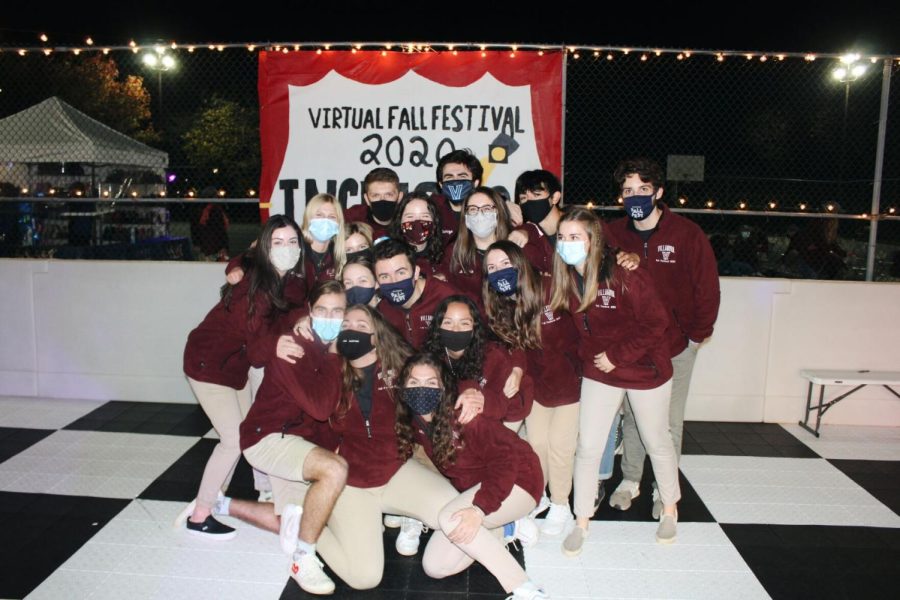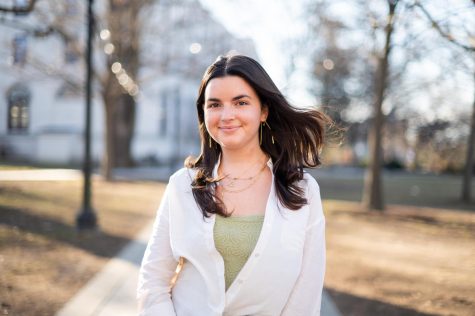A Tradition Reimagined: SPO Fall Fest Goes Virtual
Courtesy of Special Olympics Media and Publicity
Members of Special Olympics Committee on the roller skating rink.
November 11, 2020
Last weekend, the Villanova Special Olympics Committee held the 32nd Annual Special Olympics Fall Festival, and like many events during this unprecedented semester, it looked a bit different than usual. The committee, determined to hold the beloved event this fall despite the constraints of COVID-19, created a completely virtual festival.
The fundamental goal of the Fall Festival transcends its format, as best explained by Nick Conti, this year’s Festival Director.
“Our mission is centered around inclusion of individuals with and without disabilities, regardless of race, gender, ethnicity, anything,” Conti said. “This year, we really tried to move that mission of inclusion to a virtual setting.”
This year’s festival theme, “The spotlight is yours; together we shine,” showcased that mission. Playing on an idea of “rolling out the red carpet” for the athletes, the theme’s meaning was twofold: spotlighting athletes to raise awareness while also emphasizing the importance of community, inclusive of those with and without disabilities.
“We’re giving the athletes the spotlight for the weekend, and throughout their lives as well, and the ‘together we shine’ aspect involves lifting each other up,” Conti said.
In hindsight, this theme, which the committee chose back in February before the reality of coronavirus fully set in, turned out to be a fortuitous choice.
“It was really the perfect theme to go virtual with,” Conti said, noting the creative ways members of the SpO Committee incorporated Hollywood-esque elements in video production and editing to serve the virtual format.
When the Special Olympics of Pennsylvania confirmed in mid-July that the 2020 Fall Fest could not be held on campus, questions arose surrounding how the festival would look and work. The Villanova Special Olympics Committee took the massive challenge in stride, however, and began to adapt in creative ways.
One of the most logistically important considerations was fundraising. In response to this year’s circumstances, Conti explained that the fundraising committee looked for new avenues to finance the festival, like selling custom Fall Festival masks.
Alongside the committee’s inventive fundraising efforts, historic donations by alumni and members of the University community massively helped to fund the festival.
In fact, the Special Olympics Committee received a record-breaking sum of donations from 1842 Day benefactors, an inspiring show of support for the committee’s remarkable undertaking of the virtual Fall Fest.
In planning the festival itself, the committee continued to think outside the box, turning primarily to technological tools. Notably, they created a website, www.virtualfallfest.org, that served as a hub for festival resources, including a schedule for the weekend, virtual opening and closing ceremonies, introduction videos for each sport and “Healthy Habits” information clips, all produced by students.
Additionally, despite difficulties posed by going virtual, the festival still included competitions in bocce, long-distance running and walking, powerlifting, roller skating, soccer, volleyball and flag football. Instead of participating on campus, athletes competed individually by recording and submitting their times or scores several weeks in advance to allow time for organizing and scoring submissions before Fall Fest weekend.
Although having competitions in advance did create somewhat of a “weird dynamic,” as Conti noted, missing some of the comradery and community of live competitions, the SpO Competitions Committee organized Zoom conferences throughout the day Saturday to maintain that fun, united energy and emulate in-person interactions on campus.
Conti celebrated the Zoom meetings’ ability to bring participants together.
“That was really the best way that we had athlete interaction this weekend, in my opinion, we were having dance parties and doing stretches in our living rooms and kitchens,” he said.
For all its challenges, the virtual format had undeniable benefits, too. Ordinarily, the Fall Fest’s participants almost exclusively hail from Pennsylvania, but this year’s easily-accessible format allowed for athletes and viewers from all over the country, and even the world, to tune in to the festivities.
“We were able to reach so many athletes who normally wouldn’t have been able to attend Fall Fest,” Conti said.
He mentioned the website had visitors from Texas, California, Washington, Ireland, France and even Malaysia, among others, over the weekend.
Another impactful aspect unique to this year’s festival was the committee’s creation and distribution of individualized packages for each athlete, which was a custom drawstring bag full of Fall Fest gear and gifts.
“We brought what athletes normally get during Fall Fest weekend to them this year, in a very physical, tangible way,” Conti said.
Athletes had overwhelmingly positive reactions toward those efforts to include and reach out to participants directly. Specifically, Conti described countless photos and videos sent in by athletes wearing their Fall Fest bags and using the customized water bottles from their athlete packs.
This weekend’s Fall Fest was like no other in the festival’s history at Villanova, but, in many ways, it displayed the Special Olympics’ mission of inclusion and unity better than ever before.
The Special Olympics Committee’s seamless translation of the massive on-campus event into a virtual format showed the power of creativity and community over distance, resulting in a resoundingly successful virtual Fall Fest.



